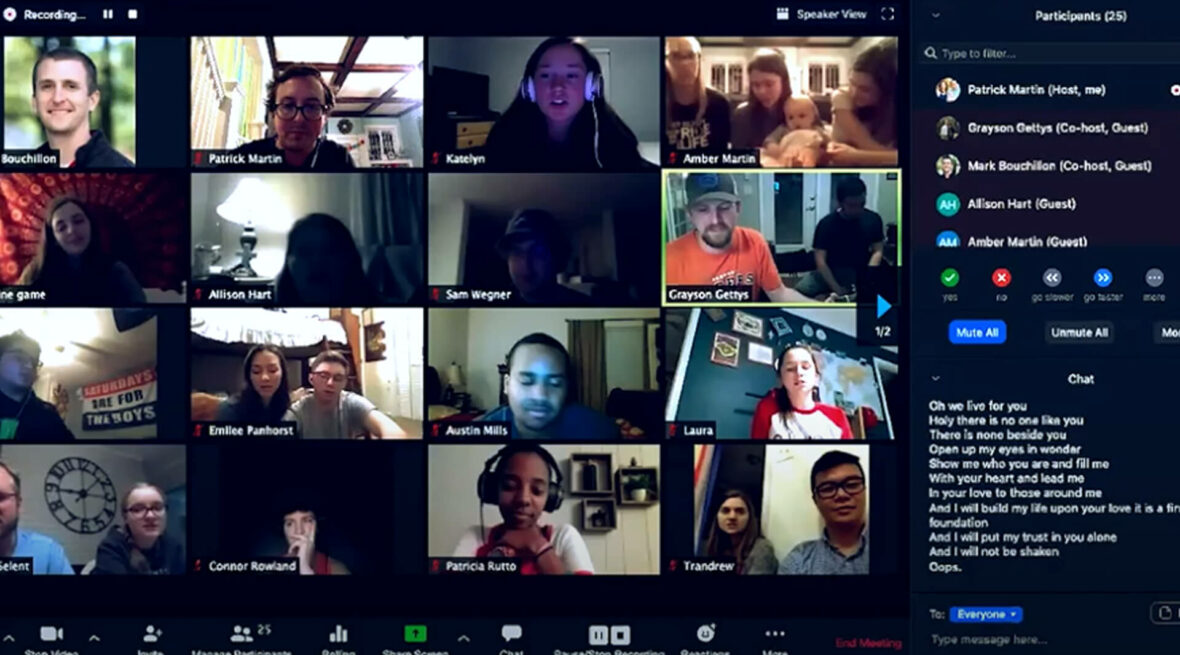One of the things that the COVID-19 pandemic has radically changed is what it means to meet. For church services, small groups, Bible studies, meetups, Sunday school classes, and much more, meeting together has been an important way to connect, encourage each other, and engage in fellowship. But as the pandemic has forced most of those in-person meetings to cease, the need for such meetings has only grown.
As people around the world have been forced to stay in their homes, avoiding in-person contact with family, friends, co-workers, and skipping many of the activities they enjoy, it has taken a psychological and physiological toll on the population. Prolonged social isolation leads to loneliness, depression, and anxiety and is linked to increases in disease and suicide. In a recent Wired article, Harry Taylor, who studies social isolation in older adults, says that “the mortality effect of social isolation is like smoking 15 cigarettes per day.”
One thing that can help mitigate the adverse effects of social isolation is to maintain involvement in community however possible. In many cases, that means taking the community online. “People now are feeling the importance of community more than ever,” says Patrick Martin, a team leader with Cru. Patrick recently joined Indigitous for our Ministry from a Distance webinar series to share how to facilitate online communities well.
In addition to mitigating effects of isolation, meeting in online communities help people grow closer to Jesus and continue to grow in their walk with God. But how can such communities thrive online? Sure, we all have Zoom accounts now, but how can you facilitate these meetings well so people feel connected and loved? Patrick shared these practical tips that he has learned.
Principles for success
Treat your call like your house. It’s your job to help make your guests comfortable.
If you have a meeting at your house, you would be there before everyone arrives, make sure everything is in order, greet people at the door when they arrive, show where the bathrooms are, offer a drink, etc. When hosting an online meeting, it’s your job to make sure everyone feels at home and welcome. “You might show them how to mute their call, how to get their video set up. You might even help them learn how to download the platform beforehand,” Patrick says.
It’s unavoidable. It’s awkward. Until it’s not.
Online meetings are much more awkward than meeting in person. People talk over each other, forget to unmute themselves before talking, and freeze from bad Internet connections. But that’s okay.
Recent research shows that Generation Z and some Millennials are skeptical of things that are too slick. They value raw vulnerability, shaky selfies on TikTok and Instagram verses highly polished productions. “Embrace the awkwardness. Younger generations would rather you be awkward than slick,” Patrick says. Once people get used to meeting together in your online community, they will get used to that “new normal” and you won’t need to apologize for technical glitches and other issues that come from the medium.
Just like before, people need focused and unfocused time.
“It’s going to be tempting to just sort of go through your content and then say bye to everybody,” Patrick says. Unfocused time, however, is an important part of the meeting. “People need time just to catch up, to hang out with each other, to share highs and lows for the week,” Patrick says. One suggestion is to not close the meeting as soon as you’re done. Instead, give everyone extra time at the end of the call so that anyone who wants to stay longer and continue to talk can do so. As the online meeting host, you can leave the call while leaving it open for those who want more time.
Create touchpoints between meetings.
Whatever your meeting cadence is – weekly, monthly, whatever – it is important to have touchpoints in between those meetings so people feel like they’re connected throughout, not just when they jump online for a call. “Just like in real life, if you only see someone once a week, it’s not a real relationship,” Patrick says. That can include asynchronous communication via text, WhatsApp, Facebook, or some other platform. It could also be using a buddy system, where everyone in the group is paired with someone to keep in touch with during the week. Social events like a game night can also work.
If you’re a current group leader, hopefully these tips can help you improve your online communities. You can use this article to evaluate how well you’re doing. If you’re not leading a group, this is a great time to start one. People are in need of community, perhaps more than ever, and by starting a group you can be a blessing to those in need.

